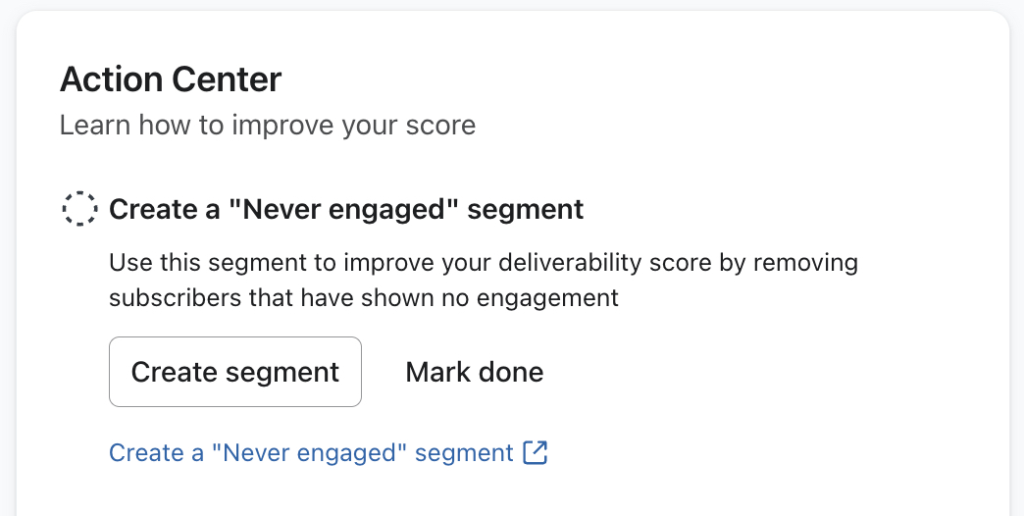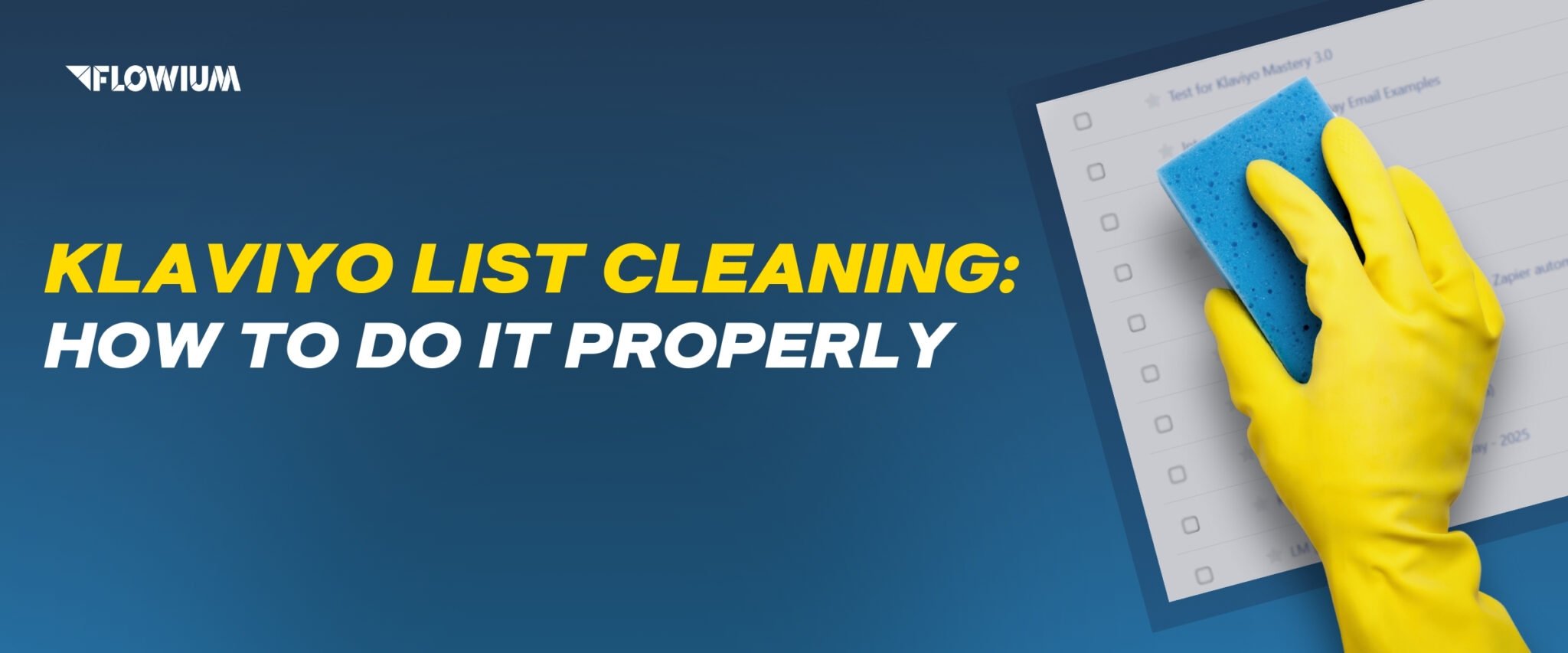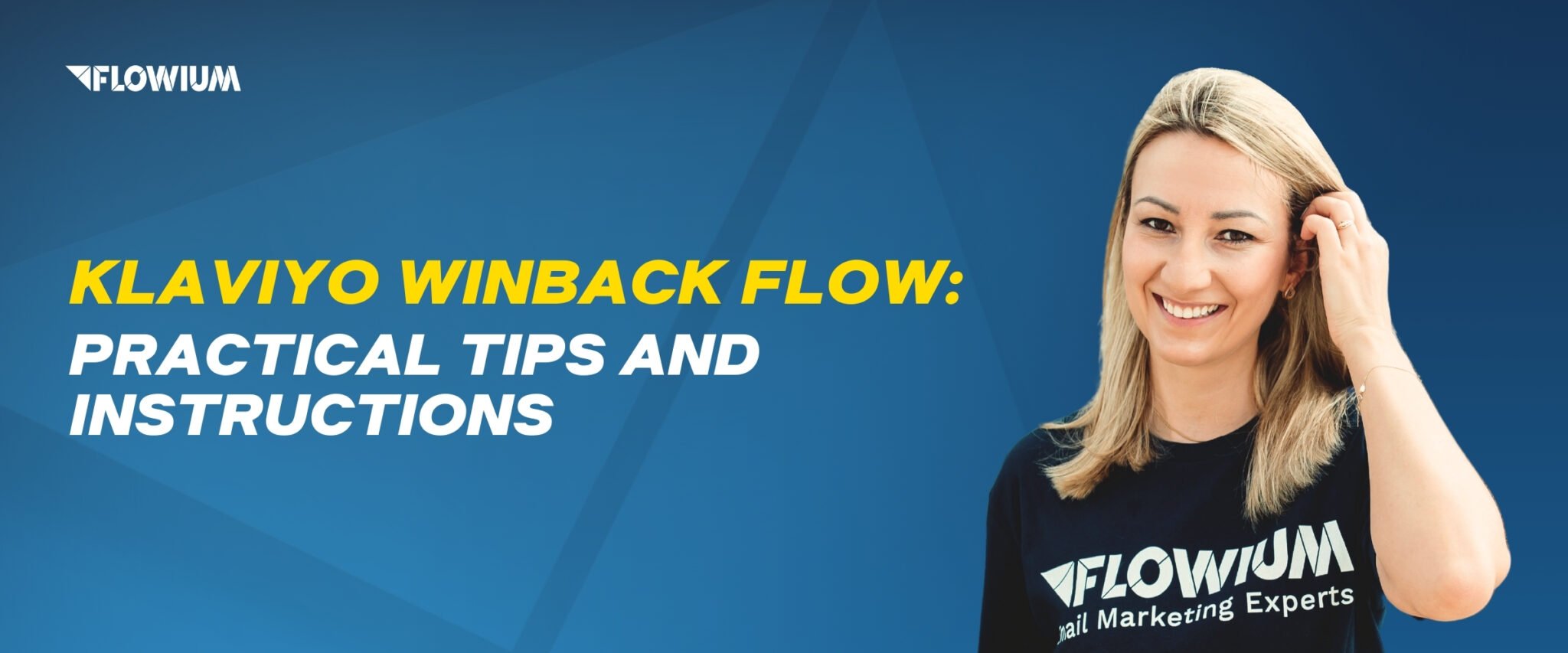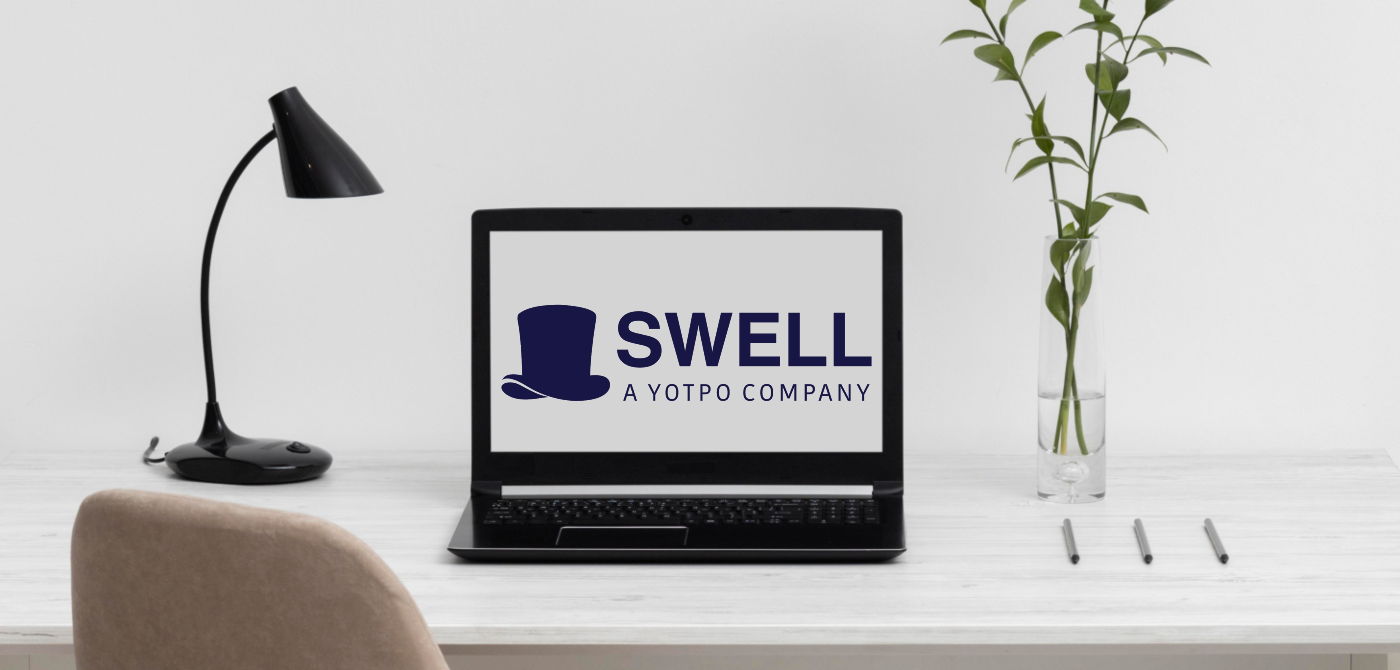The number of your subscribers keeps growing but you don’t see any increase in rates and revenue? It’s time to reconsider how you manage your email list. By cleaning your list and being smart about who you email, you’ll ensure that the appropriate message reaches the right people—people who want to hear from you. It can also prevent you from paying for a bloated list, wasting time emailing disengaged customers, dealing with poor deliverability, and losing income.
In this article, you’ll learn how to thoroughly do Klaviyo list cleaning. This is critical, yet many ecommerce companies overlook it. If you want to succeed with email marketing, you must first clean up your list. Let’s get to it!

What is Klaviyo List Cleaning?
Klaviyo list cleaning is the practice of eliminating invalid, inactive, or unengaged email addresses from subscriber lists to enhance deliverability, open rates, and overall email performance.
Klaviyo improves several aspects of your list’s quality and lets you purge it of inactive or disengaged profiles. It’s also critical to remember that consistent list cleansing is necessary to maintain high deliverability and guarantee that your emails reach recipients’ inboxes.
Why Klaviyo List Cleaning is Essential
Connection to Email Open Rates
Your open rates highly depend on the quality of your email list, and now we’ll explain why.
The average good newsletter open rate is around 20% based on industry benchmarks. That means four out of five emails aren’t opened. When you hear “20%,” it doesn’t seem so horrible, but when you consider that 80% of your audience is ignoring your emails, it hits home.
The majority of people you email will not read your email, which is normal. Just like you do not read every article in a newspaper or magazine, even your most committed subscribers will not read every email.
80% of individuals stop opening your emails because they’re no longer interested, even though this truth is hard to accept. Continuing to message them only puts you in a disadvantageous position, making your overall open rates and brand reputation lower. That’s why you need to consistently apply the best practices of list cleaning for your Klaviyo marketing that we’ll share in this article.
Misconceptions About List Cleaning in Klaviyo
- Bragging about your list size.
Many e-commerce owners proudly state, “I have 500,000 subscribers on my list!” However, having a massive list only matters if those subscribers are engaged. A million subscribers mean little if most never open emails. A list of 500,000 engaged subscribers—who regularly receive and open emails—is worth bragging about. However, a large list alone does not guarantee successful email marketing.
- More emails sent equals more sales.
This may work in the short term, but over time, it harms account health and increases the likelihood of emails landing in Spam or Promotions folders.
- Suppressing users means they can’t purchase from us again.
Suppressed users only stop receiving marketing emails. They can still browse, purchase, and receive transactional messages.
- Some users might eventually re-engage, so keeping them is worth the risk.
Holding onto disengaged subscribers jeopardizes the overall deliverability of emails for a small number of potential re-engagements. Some might eventually re-engage, but is it worth risking your entire account? In such cases, you can also launch a re-engagement campaign, e.g., a sunset series, where they will send 2-3 emails and ask inactive subscribers if they are still interested in receiving the newsletter. If they do not respond, then delete them.
- Not asking for an email address update.
Customers who subscribe with less frequently used email addresses might think they are not receiving emails. Requesting an updated email address from these users ensures they receive messages where they engage most.
Consequences of Poor List Hygiene
Regularly checking your email list and deleting irrelevant addresses is critical. Using Klaviyo list cleaning as a service is a good choice to avoid negative consequences that can disrupt your business processes.
Cleaning up your email list, no matter how difficult, guarantees that emails are sent on time and helps to avoid spam traps and high spam rates. Regular list cleaning is a best practice for any email marketing program, regardless of the platform utilized. Keeping the list clean reduces unsubscribes and avoids spam filters.
- Lower Deliverability
Some people think unsubscribes are a good thing, assuming that their list is “cleaning itself”. Yes, unsubscribes can be natural—maybe someone simply isn’t interested anymore, or maybe they found a better deal somewhere else. However, a high unsubscribe rate reduces deliverability and can trigger spam filters.
- Decreased Sender Reputation
Another big reason to clean your list is to avoid spam complaints. If emails are detected as spam too often, it significantly hurts sender reputation.
- Risks of Account Suspension
Inadequate list hygiene may result in account suspension or termination by providers.
- Risks of Legal Penalties
The maximum penalty for breaking the CAN-SPAM Act is 16,000 dollars.
- Business Disruptions
Restoring a suspended email list can be challenging and have an impact on engagement and sales.
List Cleaning Klaviyo Benefits
Regularly performing list cleaning in Klaviyo can bring your account great performance results and help to maintain them in a long-run strategy. Here are the main advantages:
- Reduced rates of unsubscribes;
- Supporting the upkeep of an active profile;
- Increasing the reputation of your IP;
- Improving health rating (a metric provided by inbox agencies)
- Keeping you from falling for tricks that could lead to the blacklisting of your IP address;
- Gaining valuable insights for future strategy optimization;
- Avoiding sending emails to spam emails (i.e., those that are of no use and only cause problems)
- Reducing ESP costs.
Cutting Down on Unsubscribes
Klaviyo list cleaning helps to increase the number of individuals who open and click on your emails while decreasing the number of people who unsubscribe.
Flowium defines an engaged subscriber as someone who has opened and/or clicked an email during the last 90 days.
- We change our benchmark based on results. For example, if open rates regularly exceed 30%, we gradually expand the engaged segment by 10 to 30 days.
- For example, one of our clients began with a 90-day engaged period. We’ve extended it to 180 days because their engagement rate has remained high.
On the other hand, we do the same with the unengaged portion. If someone has not opened or clicked an email in the last 90 days (or whatever term we specify), they are labeled unengaged. Identifying this segment with Klaviyo and clearing them off the list allows us to reduce the overall number of unsubscribes.
Engagement and Customer Retention
If you notice that subscribers are beginning to lose interest in your brand, you can run targeted advertisements to re-engage them.
Stop wasting time with subscribers who aren’t interested in your emails. If they haven’t engaged in 90 to 180 days, they won’t—unless you offer them an incredible, unbelievable discount (which isn’t a long-term strategy).
To prevent contacting disengaged contacts, which might reduce deliverability (particularly with providers like Gmail), stop sending them your regular emails. Instead, we recommend using a winback series to reactivate them.
To implement this strategy properly, you need to use advanced segmentation, which includes two key win-back segments:
- Ex-High Rollers (once high-value customers)
- Ex-Enthusiasts (formerly engaged but now inactive).
These are the two key categories that should be targeted with particular initiatives to re-engage them.
Pro Tip: Don’t spend too much effort on winback campaigns. People who are already engaging with you should be prioritized over those who are just waiting for a 50% discount.
Boosting Deliverability Ratings with ESPs
The majority of major email service providers, including Google and Yahoo, monitor how recipients react to emails from your domain, including how many are opened and how many are flagged as spam.
ESPs utilize this information to determine whether your emails are spam. Reaching people who want to receive your emails becomes challenging if you have a lot of unengaged people on your list.
Creating Customized Content for VIPs
Once you are certain that your list contains genuine, engaged, and interested potential clients, you can begin tailoring content for those individuals. Email clients will eventually put your emails in the spam folder if they frequently bounce or go unopened. Therefore, regularly clearing out bouncing profiles is essential.
Emails that soft bounce more than 4 times should be removed from your campaigns, even though Klaviyo suppresses profiles that do so 7 times in succession.
Developing Precise Strategies
You will be able to view your account’s actual stats and adjust your strategy to be more precise and successful when you remove inactive users from your list.
Cutting Expenses
As you are aware, many ESPs charge you based on the number of subscribers you have, and Klaviyo adopted a similar price model. If your subscribers aren’t interested in your content, you shouldn’t keep them and pay for them.
How to Do List Cleaning in Klaviyo
Doing list cleaning in Klaviyo correctly is very important to optimize your email marketing KPIs. In the long run, it’ll allow you to stay ahead of the competition and maintain your eCommerce business at the top of the game compared to brands who don’t do it.

Step 1: Identify Unengaged Contacts
The first step in cleaning your list is to divide it into unengaged profiles and then suppress or delete them. The first step in list hygiene is identifying unengaged contacts. The main idea is to deliver emails just to the engaged segment—people who are likely to open, click, and perhaps buy.
There are a few ways of identifying unengaged connections. We’ll walk through our approach at Flowium and share Klaviyo’s recommendations.
How Klaviyo Identifies Unengaged Contacts
Klaviyo suggests categorizing your mailing list into several groups as a first step:
- Customers who joined your email list during the last six months are considered new customers. No matter how they behave, they will remain.
- Highly active customers: Over 30% of your clientele are categorized as “very active”.
- Active clients are those who have made a transaction during the last six months or opened an email within the last three months.
- Fading away: Clients who haven’t opened an email in four to six months are disappearing.
- Customers who haven’t opened an email or completed a transaction in a long time are considered inactive.
Klaviyo employs a similar method of identifying unengaged subscribers, as we mentioned before, but with a six-month (180-day) duration. Klaviyo considers a recipient as having lost interest if they have not opened an email in more than six months or made a purchase. Anyone who hasn’t engaged in the last 180 days is called unengaged unless they fit into another category.
You have the option to automatically generate a Never Engaged segment from Klaviyo’s deliverability hub or manually create a section of unengaged profiles.
To view the page:
- Go to Deliverability under Analytics.
- Find the Create a Never Engaged segment recommendation in the Action Center.
- Choose “Create segment.”

Step 2: Identify Emails That Can’t Be Delivered
Once you’ve identified your unengaged contacts, the next step is to remove undeliverable emails which are called bounces.
There are two types of bounces: soft bounces and hard bounces.
Hard bounces occur when an email cannot be delivered due to an ambiguous reason. This could be because:
- The email address is fake;
- The email is misspelled;
- The domain doesn’t exist anymore.
If you’re using the Klaviyo list cleaning feature, it will automatically remove hard-bounced emails and suppress them from future sends. This helps maintain your deliverability rate and open rates by ensuring you’re only sending to valid contacts.
Soft bounces are different from hard bounces because they happen due to temporary issues. Some common reasons for a soft bounce include:
- The recipient’s inbox is full.
- The server is temporarily down.
If an address soft bounces 7 times in a row, Klaviyo will suppress it automatically.
Pro Tip: Instead of waiting for seven bounces, we recommend excluding emails after four soft bounces. Whether you suppress or delete them is up to you, but keeping an eye on soft bounces is crucial because they affect your open rates and click-through rates.
Step 3: Identifying Spam Traps
This step is both important and confusing for many people.
Spam traps are fake email addresses that are posted online to identify users who might be gaining contacts without authorization. They are designed to detect and block spammers. These fake email addresses don’t belong to real people and never engage with your emails.
Reducing the possibility of sending to spam traps will improve your chances of getting in to the inbox, which will result in more clicks, opens, and eventually more revenue. Klaviyo uses this information to find any profiles in your account that have never interacted with your brand or spam traps on your list.
- Identifying Spam Traps in Klaviyo
Since this information is not made public, it is impossible to pinpoint the precise email addresses that are spam traps. MBPs are aware that bad actors would take precautions to avoid their traps by filtering spam traps out, rendering them ineffective, if they reveal the sites of their traps. As a result, you need to compile a subset of the profiles that have never displayed any activity. Any possible spam traps in your list will be included in this segment.
For large accounts, non-human contacts can’t take specific actions like purchasing or engaging with content. So, we create a segment that includes only contacts who have never performed any of these actions. Once you generate that list, you’ll likely find that it’s much larger than expected.
However, now that you’ve identified potential spam traps, you can ensure you’re not sending emails to them. At this point, the best approach is to exclude them from every future campaign.
- Testing Spam Traps with Small Sample Groups
For clients with high engagement and great deliverability, I’ve started testing tiny sample sizes of these suspected spam traps in campaigns—groups of about 200–300 contacts.
The goal is to see if they engage at all. If they remain inactive, that provides a double confirmation that they are indeed spam traps. At that point, you should suppress them permanently because you know for sure they aren’t real people.
- Suppress Spam Traps & Move Forward
Suppressing spam traps is the next step after identifying them. Keeping fictitious email addresses on your list is pointless.
If you find out that 400,000 of your 500,000 subscribers are spam traps, simply suppress them. Although it may significantly reduce the size of your list, it guarantees that you are only concentrating on actual, active users—those who embrace your brand rather than merely put up with it.
Take the time to analyze your list and separate real users from fake ones—it’s a bigger issue than most people realize. Many ecommerce business owners and marketers don’t fully grasp their impact, but they can make or break your email deliverability.
Step 4: Exclude the Unengaged Segment from Campaigns and Flows
Klaviyo advises you to keep unengaged contacts out of most of your campaigns. Your deliverability may suffer if you keep sending messages to these contacts even when they aren’t clicking or opening them.
Pro Tip: In some cases, it is advisable to simply reduce the frequency of sending emails to those who do not open them.
- Go to Klaviyo and select the Campaigns tab.
- Choose “Create campaign.”
- Select a channel (such as email, SMS, or push) and give the campaign a name in the popup that displays.
- Click “Save” to proceed.
- Select the list or segments you want to send to in the Send to section under the Recipients section.
- Choose the unengaged segment for the channel you are sending to in the Don’t send to (optional) section.
This segment must also be excluded from specific sends and future sends.
To prevent harming your sender reputation, you might think about removing unengaged contacts from it if you have high-volume flows.
To keep contacts out of high-volume flows:
- Open Klaviyo and select the Flows tab.
- Create a new flow or select an existing one.
- To access the trigger menu, click the flow’s trigger.
- Click Add next to Flow filters.
- Choose “Add flow filter.”
- For that channel (see the email, SMS, and push sections above), add a flow filter that corresponds to your unengaged segment.
- Click “Save.”
Step 5: Suppress or Delete Inactive Accounts
Now that we’ve identified spam traps, the next step is to suppress those accounts.
Suppression means the profile remains in Klaviyo, but you can’t email them anymore.
Based on our practice, you should keep your suppressed contacts. Here are a few reasons why:
- They don’t count toward your Klaviyo payment plan.
- You still have access to their data. This includes purchase history, engagement trends, and past campaign performance.
- They can re-engage. If a suppressed contact signs up again or interacts with your brand, they automatically become active again—but you can’t manually unsuppress them.
- Some clients prefer to delete inactive contacts instead of suppressing them, but deleting is permanent. Unless you’re 100% sure, suppression is usually the safer option.
Pro Tip: As an additional practice for correct Klaviyo list cleaning, add a link to your preference page in your email footer. A preference page is a webpage that appears when someone clicks “unsubscribe” in an email. Instead of instantly removing them, it gives subscribers control over how often they receive emails—allowing them to adjust their settings instead of opting out completely. It helps reduce unsubscribes by giving users an alternative to leaving your list entirely. This isn’t necessarily part of list cleaning, but it’s a crucial step in retaining subscribers.
Need Help with Klaviyo List Cleaning?
By following these best practices for Klaviyo list cleaning, you can gradually increase your deliverability by reducing the number of contacts who are not responding to your messages. This practice can also improve your other performance indicators and brand reputation among ESPs. The more often you follow this habit, the healthier your account will be and the more successful your email marketing strategy will turn out.
If you have any issues with cleaning your list, turn to Flowium, a certified Klaviyo agency. We’ll organize this process for you seamlessly and effectively, and help with list building strategy and other optimization tasks.
FAQ
- How often should I clean my list in Klaviyo?
How often you plan to clean your customer list will depend on how often you plan to contact your customers and how often you expect them to return to make purchases. Generally speaking, people are unlikely to read your emails again if they haven’t done so in the previous twenty-five days. Naturally, this varies from company to company.
- Can I automate Klaviyo list cleaning?
Modern email marketers that use Klaviyo automate the entire process, directing subscribers into a re-engagement campaign to maintain a clean list and removing them from newsletters when they cease reading emails.



![How to Do a Klaviyo Audit? [Expert Guide]](https://flowium.com/wp-content/uploads/2023/02/klaviyo-audit.png)

